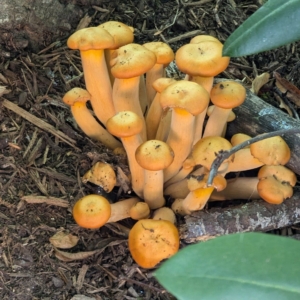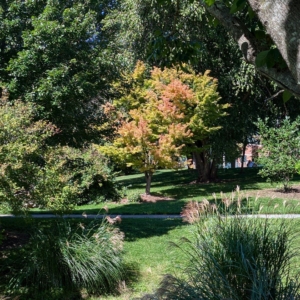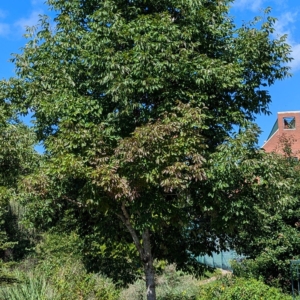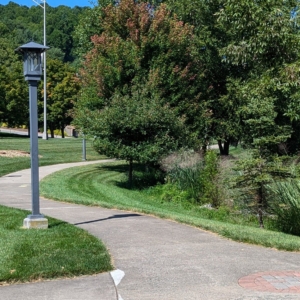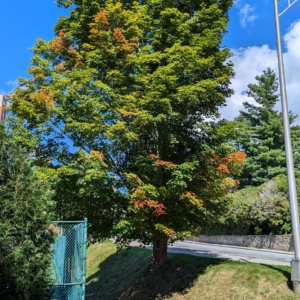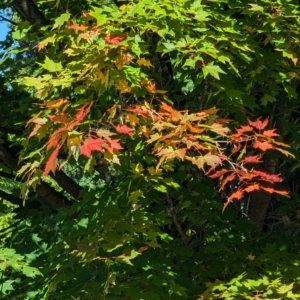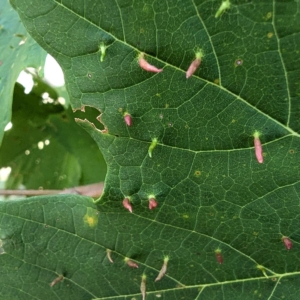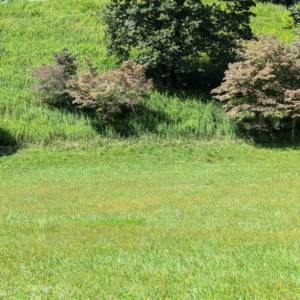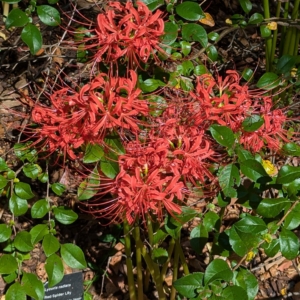Fall Color Report
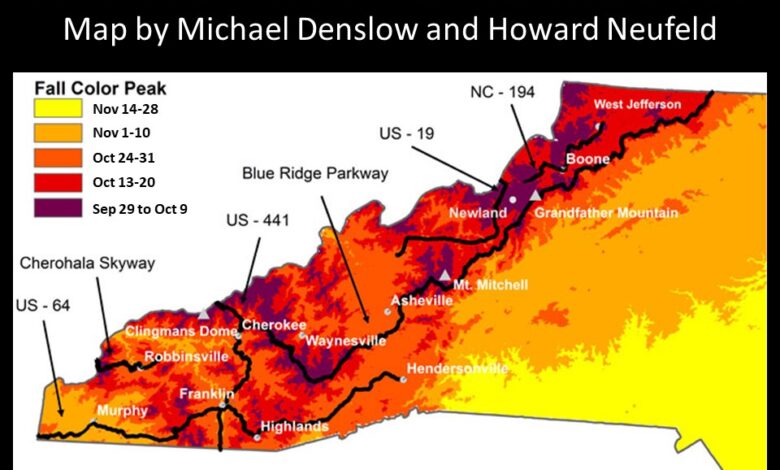
2024 Updates
For the 13th year in a row, WataugaOnline.com is teaming up with Dr. Howard Neufeld, Professor of Plant Eco-physiology at Appalachian State University, better known as The Fall Color Guy to provide information as the colors start changing. For reports from previous years click here.
Dr. Neufeld shared some thoughts just before previous fall seasons that are still relevant for this or any fall season:
As for wet weather, there have been some publications on the impacts of weather on fall color (especially timing, not so much quality). Precipitation has only minor effects on timing in the fall. Temperature is more important. So, at this point, I don't see anything to make me think that fall colors will be adversely affected, either in timing or quality.
What happens in mid- to late August and in September, temperature-wise, will be more important, especially for quality (notably the intensity of the red colors)”.
People think fall colors are good when they last a long time, and have plenty of brilliant reds interspersed with the oranges and yellows. So, the quality will depend on how much “redness” we have this fall.
Trees tend to make more red colors (anthocyanins) in the fall when it's cool and sunny, and if we have a slight but not severe drought.
Sunny days means more photosynthesis, and more sugars produced in the leaves, and sugars induce anthocyanin production.
A slight drought impairs uptake of nitrogen (we think) and some experiments suggest that plants low on N make more anthocyanins.
Usually, fall colors peak around Oct 11-14 in the Boone area; sooner by a few days up to a week at higher elevations, later at lower ones. Nice colors can stick around for a week or more, although the peak usually comes and goes in just a few days, weather permitting (no high winds for example)”.
Fall Color Report for the Week of September 22, 2024
This past Thursday I took off early (predawn) and headed over to Craggy Gardens on the Blue Ridge Parkway. This high elevation site is about 20 miles north of Asheville and about 15 miles south of the entrance to Mt. Mitchell State Park.
There is a parking lot and trailhead just a quarter of mile north of the visitor center where you can start an easy hike up to some rock bunkers that give you panoramic views north and south of the mountains and valleys. I highly recommend this hike, which is not a difficult one.
This is turning out to be an atypical year (aren’t they all, though?) given the course of our summer. We had a hot, dry June, followed by a cool, wet July, followed by a hot, dry August, and then a cool start to September, and now a late season warming. These up and down temperatures and rainfall have stressed some of the trees, particularly the birch, which are yellowing early and dropping lots of leaves. The same for tulip poplars. Many of the red and sugar maples are far along in their color development, primarily in urban areas, but not limited to those areas.
For example, there is considerable color showing up on the hillsides above 3,000’, more so than in previous years. Even in Boone at 3,000’ there is noticeable color now. Will this continue and we end up with an early fall color season? I don’t think so, and the reason is that temperatures have moderated and are now quite warm, and projected to remain this way for the next week or two. Warm temperatures slows down the progression of leaf color, particularly in the maples and black gums.
We had a similar pattern in 2017. In that year we had an early cool fall and the trees started changing early, only to have that interrupted by a two week heatwave that virtually stopped color development in its tracks. Trees that had colored up early began to lose those leaves during the heatwave and the forests reverted back to having all green leaves, at least until a second cold wave moved in, which got the colors going again. Whether that will happen this year will become evident over the next two weeks.
At Craggy Gardens, I saw abundant “greenfall”, which is when trees drop their leaves while still green. I think this occurred because of the wind and rain that moved through the region a few days before. Luckily for us leaf peepers, most of the leaves are still on the trees, so once it gets cool again, we should be in for a good fall color display. I will have to keep a sharp eye on those trees dropping their leaves now, as that could diminish the quality of the display in October.
Up on Craggy, the buckeyes were dropping their leaves while being loaded up with fruits. Seems to be a good year (a mast year) for them. The mountain ash are also having a good year, with abundant orange-red fruits on display. A few late blooming wildflowers, such as goldenrods and asters, adorn the trailsides, and dog hobble, a species of viburnum, has its distinctive colorful leaves in full form now.
Most of the lower forests that you see from the overlooks are still green. The best color can be found along the ridge tops and down a few steep slopes. I’ve seen pictures from Graveyards (which is south of Asheville on the Parkway) posted on the web, and color is well on its way there. This site has a lot of cold air drainage which I think contributes to its early display each year.
From Craggy I traveled north on the Parkway and ascended to the top of Mt. Mitchell (99% of the way by car, the last 1000’ by foot). The skies were becoming cloudy, so most of my views were blocked as you can see from the photos I am posting here. There is a nice 1 mile loop trail that starts near the top and ends up back at the parking lot, which I highly recommend. It’s very easy (although it can be slippery in places). It traverses through a mostly Fraser fir forest, with the occasional red spruce, plus lots of mosses and fungi, and lichens. No great views, but a relaxing and beautiful hike nonetheless.
Next week I’m on to Elk Knob State Park, just north of Boone, NC, for another high elevation hike. Also, for any of you who may be in the High Country next Thursday, September 26th, I’ll be giving a talk titled “Awe and Wonder of Trees and How They Work” at the Blowing Rock Art and History Museum at 11 am. Admission is free, so come on out! The museum has a wonderful collection of art on display and is worth a visit!
As always, you can find my reports on the Appalachian State University Biology Webpage (https://biology.appstate.edu/fall-colors). There you can find not only past reports, but also a variety of essays on all things fall color, such as the economics of fall leaf color, a leaf color map for western NC, the science of fall color, and more.
Ciao!
Fall Color Report for September 14, 2024
Today I report on town and gown color for Boone, North Carolina and Appalachian State University. Although it’s still early in the season, I am seeing a lot of trees turning color in town and on campus. The forests surrounding Boone though, are still a luscious green.
I also sense, as many of you may too, that colors are coming along slightly early this year. But don’t get too caught up in that – a warm spell in the next two or three weeks could set things back very quickly.
Nonetheless, I am seeing good color on red and sugar maples, dogwoods, tulip poplars, some birch, clematis and Virginia creeper, and sourwoods. Most color is in town or on campus. I’m also seeing a lot of premature leaf drop. That could be due to the strange summer we’ve had this year.
Why might the trees be early this year and why the premature leaf drop? We had a very hot and dry June, followed by a cool and wet July, followed by hot and dry again in August, followed by cool (not wet) in September. Maybe all this seesawing back forth between hot and cool has stimulated trees to turn early and to have premature leaf drop. I don’t know, but it’s a hypothesis.
This Thursday, early, I will be heading down to Craggy Gardens to check out color development of the high elevation trees. Just north of the visitor center is another parking area with a trail to some bunkers at the top with great views. It’s too early for peak color there, but I’d like to catch it as it starts.
Craggy Gardens is on the Blue Ridge Parkway about 20 miles north of Asheville and a few miles south of Mt. Mitchell State Park. Mt. Mitchell is the highest peak in eastern North America, at 6,684’, and I’ll stop there on the way back to Boone to take in the views. You can drive almost to the summit there, and there are nice trails, both long and short.
I have to do some travel this fall season (like going to see my 97 year old mom) and I will be on the road right around peak color time in mid-October. But as I travel north, I’ll let you know how the fall colors are up through Virginia and Maryland.
In the meantime, enjoy the rest of summer!
Fall Color Report for Week of September 1, 2024
It’s still a little early for fall colors, but surprisingly, as many of you have noticed from the photos by Tom Mabry and others, some trees are turning early. I recently drove from Boone to Atlanta for the holiday break to see my son and his wife and their one and a half year old son, Oliver, my first grandson. As you may expect, he’s very cute, and in the imitation phase now – you do something and he mimics it back at you.
A variety of trees are showing color now, some at high elevations, but some at lower and southern locales, like in Georgia. For example, I saw sourwoods along the highways in the Piedmont of NC turning red, and in Georgia sumacs were almost entirely red. All along the way, roadside red and sugar maples were turning, and most prominently, tulip poplars in the Piedmont from NC to GA. These trees had lots of yellowing leaves, which is often a sign of heat and drought stress. Tulip poplars don’t like severe drought and when it does occur, the first thing they do is drop some of their leaves, usually the older, inner canopy, less active ones. This means that they have fewer leaves to lose water from and that helps them maintain their water status until it rains again. In the mountains, where its cooler and we are not in drought, most tulip poplars still have all green leaves.
I don’t think this portends an early start to the fall leaf color season. Rather, I think it is symptomatic of the weird summer we’ve been having. It was brutally hot and dry in June, then cool and wet in July, and then we went back to hot and dry in August. Luckily, temperatures have moderated as of today and are supposed to remain comfortable for a few more days.
I still think what happens starting two weeks from now will be the major determinant of the quality of our fall color leaf show this year. If we get a cooling off in the latter half of September, and it continues into the first half of October, then colors will be right on time and hopefully of good quality. If it stays warm though, they could be delayed as well as diminished in their intensity.
I’ve attached three graphics you might find useful. One is heat map showing when colors normally peak in western North Carolina. Another is a graph I published last year showing how the week of peak color has bounced around through the years. Notice how it was mostly within the same time slot from 2008 – 2016, but that from 2017 – 2023 it has moved around, sometimes even being two weeks late as in 2018. In fact, the variability in timing is twice as high in the past seven years as it was in the first eight years of my writing forecasts. I attribute this to climate change, as increased variability is one of the predicted symptoms for this phenomenon.
The last graphic is a table listing the major tree species by the colors their leaves turn in the fall. If you’re not a plant taxonomist but still want to know what tree species you are viewing, take a closeup picture of a leaf from that tree. If you have Google Lens, or some other plant ID program, like iNaturalist, you can use it to identify the tree for you. I routinely use Lens on my Android phone with great success.
My first official foray into the field will be in two weeks to Craggy Gardens, which is a high elevation site along the Blue Ridge Parkway, about 20 miles north of Asheville. Remember, colors appear first at higher elevations and then work their way down over time.
There is some major construction occurring on the northern sections of the Parkway in NC. Click HERE to see where the road closures are and how to detour around them.
The Parkway is totally closed just north of Doughton Park at mile marker 238.5 north to 221.5. However, the restaurant is open, and you should be able to get to Wildcat Overlook which is adjacent to the picnic area and old hotel (not open). You can take US 221 through West Jefferson to detour around closures and access Doughton Park on Rt. 18.
A short section of the Parkway is closed between mile markers 248 and 249. From mile marker 282 north to 261 it may be one lane, and occasionally closed, but otherwise open. The same for Blowing Rock to Linn Cove Viaduct. From the linn Cove Viaduct south to the Smokies, the Parkway appears totally open.
I have attached some photos of trees on the App State campus from earlier this week. Enjoy!








